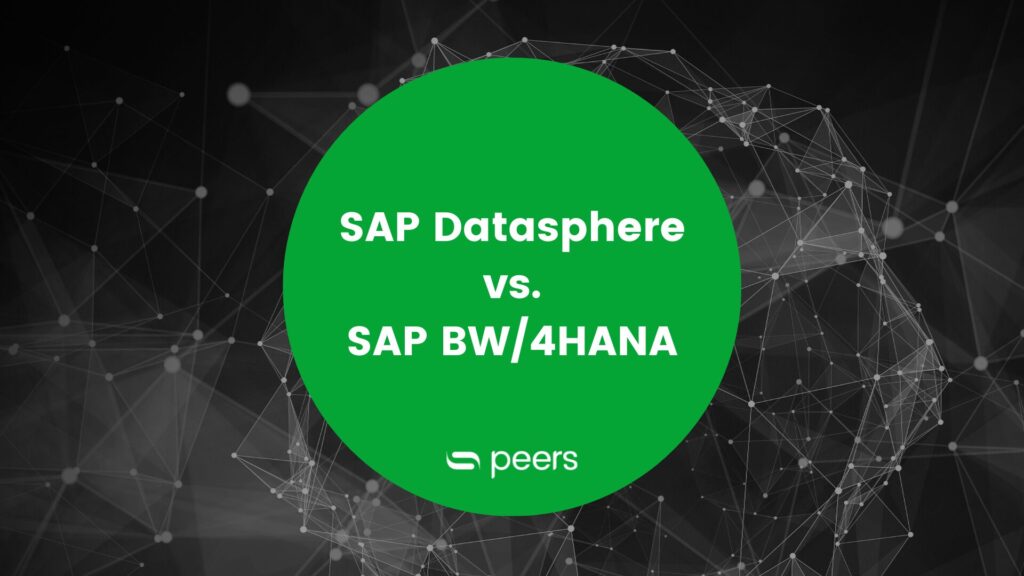How does financial planning work with the SAC?
- Planning, SAP Analytics Cloud
- financial planning, sac
- 5 min reading time

Theresa Riesterer
How can companies ensure financial success in the future? Financial planning plays an important role in this. Here we explain why financial planning makes sense, what elements it consists of and who provides support in preparing it.
Table of contents
1. what is financial planning and what belongs in financial planning?
Financial planning is a central instrument within a company. It is part of business accounting and plays an important role when it comes to controlling and maintaining liquidity within the company. The aim is to forecast expected cash inflows and outflows. In order to be able to plan future investments, financial planning considers and depicts, among other things, cash requirements or cash surpluses. Investments, for example in new machines and technologies or in the development of new markets, are intended to ensure that companies are competitive and remain so in the future. In addition, risks should be identified and mitigated as early as possible.
1.1 Components of financial planning
The following components belong in a financial plan:
Webinar
SAP Datasphere & SAP Analytics Cloud feature update in Q2/24
Date: 28.05.2024
Time: 08.30 - 09.15 a.m.
As a start for financial planning, sales planning has proven to be useful. The core of sales planning is the preparation of a sales forecast. This usually covers the next three to five years. The aim is to determine what sales can probably be expected during this period. In order to obtain values for the future that are as reliable as possible, sales and sales developments from the past are considered in addition to market analyses.
In cost planning, different types of costs must be taken into account in order to be able to forecast future costs. In particular, a distinction is made between variable and fixed costs. In the case of fixed costs such as salaries or rents, any plannable changes such as wage increases must be taken into account.
In the case of variable costs, such as for materials, it also makes sense to include sales planning. If an increase in sales is planned, this will also affect the planned quantity and must be taken into account accordingly.
Investments are an important part of securing the company's existence. Since capital is converted into assets during investments, such an investment also always means the outflow of money from the company. For this reason, investments must first be checked for their profitability and financial viability. In addition, the expected financing requirements must be planned in order to be able to provide the necessary funds in good time.
Investment planning is thus the basis for the investment process.
Liquidity planning compares expected cash inflows and outflows with the aim of maintaining the company's liquidity and being able to present and analyze its solvency accordingly.
Liquidity risks should also be recognised in time and appropriate countermeasures can be taken. The key figure that represents the netted incoming and outgoing payments is called cash flow.
For capital requirements planning, the expected financial requirements for the current business are included. Capital requirements planning therefore regularly builds on investment planning. Capital requirement planning thus also contributes to securing liquidity. It consists of a short-term and a long-term component. For short-term capital requirements, current assets are considered in particular, for long-term capital requirements, fixed assets are considered.
In the budgeted income statement, future expenses and income are compared. From this, it can be derived how the earnings situation will develop in the future. Thus, the budgeted income statement is a core element of financial planning, as it provides information about medium and long-term profits.
Finally, the budgeted balance sheet compares assets and liabilities and documents the effects of the preceding sub-plans. The budgeted balance sheet also shows asset and liability items as of a certain date.
1.2 Financial planning as part of the business plan
The business plan presents a business idea or a business concept and is the basis for investments by potential investors. Financial planning plays an essential role in business plans. It should show whether the start-up is economically viable and how much capital is required. If a financial plan is prepared as part of a business plan for a start-up project, there are differences to the financial plan within a company.
- When planning costs, it is also necessary to calculate costs that the business start-up entails (e.g. consulting costs, fees, costs for business equipment).
- In particular, a financing plan resulting from liquidity planning and capital requirements must be taken into account. Here, it must be stated how the capital requirement will be financed. In the financing plan, founders indicate how much equity they are contributing and how much debt capital they are planning to use.
- Preparation of a profitability calculation that provides information on whether and how profitable the start-up is.
2. when does financial planning need to be prepared?
In financial planning, a distinction can be made between a short-term and a long-term planning horizon. Short-term financial planning usually covers a period of three to twelve months. Depending on the situation, shorter periods may also be considered. The key issue here is to ensure solvency. Long-term financial planning looks at a period of several years (usually three to five years) and thus also takes into account the strategic orientation of the company. The central issue here is to ensure long-term capital coverage, depending on long-term capital requirements.
3. who will help me with the financial planning?
For start-ups, start-up consultancies with start-up coaches can help with the preparation of the financial plan. But business consultancies also offer help and can assist in the search for financing.
Financial planning in existing companies falls within the scope of management accounting. However, external service providers can also be called in for advice in this context.
What financial planning software is available?
In the meantime, there are various providers for creating and managing financial planning digitally. Here, too, a distinction can be made between financial planning within an existing company and a financial plan that is created in the course of setting up a business.
The following software providers, among others, come into question as business software:
- Anaplan
- Board
- Denzhorn
- CCH Tagetik
- IDL
- Jedox
- LucaNet
- unit4
And of course the SAP.
There is software for creating business plans that also includes the financial plan.
These include, for example:
- SmartBusinessPlan
- TheBizPlanner
5. financial planning with the SAC
One of the challenges in financial planning is to link the various sub-plans with each other. If changes are made in one of the sub-plans, for example in sales planning, this has an impact on the other plans. If there are several change iterations in the planning process, this leads to a high level of manual effort, which can be highly prone to errors.
The SAP Analytics Cloud (SAC) offers, among other things, a holistic planning tool in which (planning) data from different departments can be brought together. Partial planning in SAC can be linked with each other and planning can be automated in this way. Changes in cost centre planning can thus also be recorded directly as an effect in the profit and loss account - without manual change effort. This results in a reduced, because automated, planning phase.
5.1 Which transactions can be mapped within a financial plan?
Within the SAC, the following financial planning processes can be mapped:
- Cost centre planning
- Project planning
- Product cost planning
- Sales and profit planning
- P&L, balance sheet and cash flow planning
These can also be delivered predefined by SAP as so-called Business Content.
Via the calendar in the SAC, tasks can be assigned, rejected or approved - e.g. between planner and inspector. In this way, (planning) processes and tasks can be controlled directly in SAC. In addition, e-mails are automatically sent to processors and reviewers. This reduces the need for coordination and the progress of the planning process can be monitored at all times.
Due to the full integration of SAC with S/4 HANA, plan data can be exchanged between the two systems. Thus, S/4 data can first be imported into SAC and plan results exported back.
Another advantage of SAC is that non-SAP databases can be connected or even Excel files can be integrated.
5.2 How long does it take to introduce my financial planning to the SAC?
The implementation time depends on the one hand on the system infrastructure in the company and on the other hand on the individual requirements placed on the financial planning solution.
With regard to the infrastructure, a distinction is made as to whether an SAP product is already in use in the company (e.g. S/4), whether there is already an existing planning tool, or whether neither an SAP product nor a planning tool is available.
In the first case, one to three months can be sufficient; if no SAP product is in use in the company and no planning solution, three to six months must be expected. However, as individual as companies are, so are their needs and expectations of a planning solution. It is therefore all the more important to take these into account when planning the introduction period.
Want to know more about financial planning with SAC?
Would you like to delve deeper into this topic? Or are you looking for a consulting firm with expertise in financial planning with the SAC?
Then we would be happy to talk to you about it in person. We would also be happy to discuss it in combination with other application areas of the SAP Analytics Cloud.

Published by:

Theresa Riesterer
Expert SAP Analytics

Theresa Riesterer
How did you like the article?
How helpful was this post?
Click on a star to rate!
Average rating 5 / 5.
Number of ratings: 5
No votes so far! Be the first person to rate this post!








